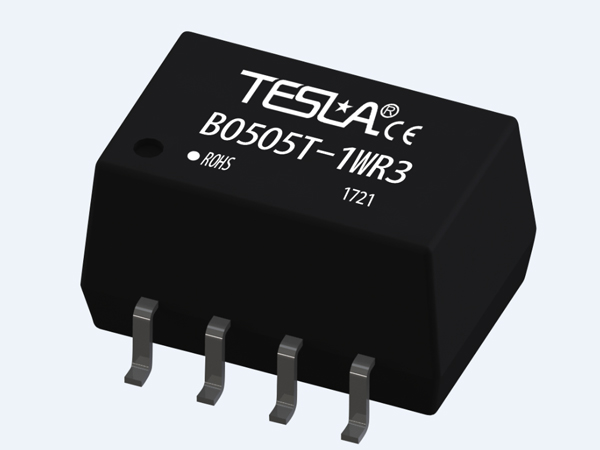Precautions for module power application
2020-08-18
1. Very light load use
Generally, the module power supply has a minimum load limit, which varies from manufacturer to manufacturer. It is generally about 10%. When the load is too light, the energy storage element will have difficulty in freewheeling and current discontinuity will occur, resulting in unstable output voltage. This is caused by the power supply itself. Determined by the working principle. But what if the user does use light load or even no load? The most convenient and effective way is to add a certain dummy load, about 2% of the output power, which can be preset by the module manufacturer before leaving the factory, or by The user installs an appropriate resistor outside the module as a load. It is worth noting that if you choose the former, the module efficiency will be reduced. However, some circuit topologies do not have a minimum load limit. For example, the E series module power supply of Ding Lixin Company can meet the normal use of users from no load to full load.
2. Multiple output power distribution
Pay attention to the power distribution between different outputs when selecting the power supply of the multi-output module. Taking dual-circuit products as an example, there are generally two types: one is dual-circuit balanced load, that is, the two-circuit current is the same; the other is unbalanced load, that is, the main and auxiliary circuits have different load currents, and the main circuit is large. , The side road is small. For this kind of product, it is recommended to select the power ratio of the auxiliary circuit to the main circuit to be 1/5~1/2. The voltage stability of the auxiliary circuit can be guaranteed within this range (within 5%), otherwise the auxiliary circuit voltage will be High or low. On the other hand, if the dual-channel load is inherently different, try not to use a balanced load module power supply, because this power supply is specifically designed for symmetrical loads. If the load is unbalanced, the auxiliary circuit voltage accuracy is not high.

3. Try to reduce the temperature rise of the module power supply
The operating temperature of the internal components of the module directly affects the life of the module power supply. The lower the component temperature, the longer the life of the module. Under certain working conditions, the loss of the module power supply is certain, but the temperature rise can be reduced by improving the heat dissipation conditions of the module power supply, thereby greatly extending its service life. For example, a radiator must be installed for a module power supply above 50W. The larger the surface area of the radiator, the better the heat dissipation, and the installation direction of the radiator should be as favorable as possible to the natural convection of the air. The power above 150W can be installed in addition to the radiator. Fan forced air cooling. In addition, where the ambient temperature is high or the air circulation conditions are poor, the module must be derated to reduce power consumption, thereby reducing temperature rise and prolonging its service life.
4. Reasonable installation to reduce mechanical stress
The lead-out methods of the module power supply are all metal pins, and the module power supply and the external circuit, the metal pin and the internal circuit of the module power supply are all connected by welding. In some special occasions, the mechanical vibration intensity is relatively high, especially when a radiator must be installed on the high-power module power supply, this situation is even more serious. Although generally potting thermally conductive insulating rubber inside the module power supply can provide a better buffer protection for the components, the solder joints may not withstand the strong vibration stress and break, resulting in the failure of the module power supply. At this time, it must be based on welding. Take additional fixing and buffering measures. For example, you can use clamps or bolts (for modules with screw holes) to fix the module to the chassis, large circuit boards and other components with relatively good anti-vibration performance, and pad some elastic materials between them to buffer Stress caused by vibration. In short, just like other components, the module power supply can only be brought into full play by careful selection and reasonable application, the reliability is fully guaranteed, and the module power supply will be more widely used!






